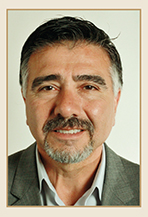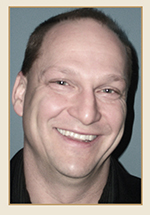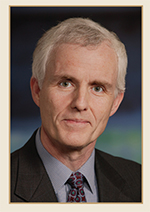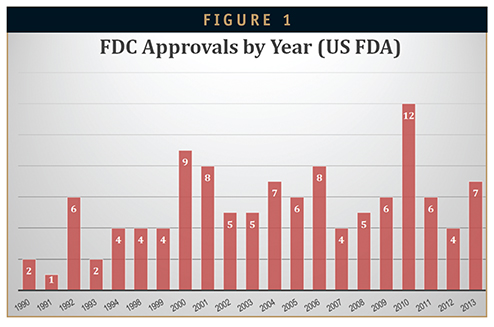Issue:March 2014
FIXED-DOSE COMBINATIONS - Fixed-Dose Combination Products – A Review (Part 1 – Introduction)
INTRODUCTION
The pharmaceutical industry has being paying increasing attention to the potential of Fixed-Dose Combination (FDC) products. In a series of three articles, we will examine the past, present, and future of these products with the intent of understanding their whats and whys. We may even identify a few areas ripe for new product concepts.
The US pharmaceutical business has seen a number of combination products approved throughout the past 2 decades. Every year, it seems there are another half-dozen or so FDC products approved by the FDA. This number does not include combination product approvals that represent new dosage strengths, new manufacturers, or generic products. If we were to include these products, the annual total would be even higher. But, as we will see, even “novel” FDC products are often “variations on a well-worn theme.”
Let’s start by explaining why we are using the term Fixed-Dose Combination (FDC) rather than Combination. While both types of products suggest the use of more than one active ingredient, the FDC designation implies that these actives are incorporated into a single dosage presentation. So an FDC product might have two actives in a single tablet, capsule, patch, or vial. It’s like a martini; the formulator, in this case, a bartender combines gin and vermouth in a single, inseparable “dose.” The customer cannot in any practical sense separate these two ingredients. A Combination though might mean two actives taken together or separately, and in proportions that are infinitely variable. Instead of a martini, you take a sip of gin and a drop of vermouth, or two sips of gin and one of vermouth. FDC products can be thought of as a subset of Combination products. They are similar but not the same. It’s easy to think of therapeutically and commercially important FDC combination products, a beta-blocker and diuretic combination, or an estrogen and progestin female hormone product.
So a product like Advair, a combination of fluticasone and salbutamol in an integral inhaled dosage form is an FDC, while a combination of injectable interferon and oral ribavirin is not. To put practical boundaries on this review, products such as multi-vitamins, electrolyte solutions, pancreatic enzyme replacements, purgatives, and insulin combinations, are not included. The overriding principle is whether the product contains two or more actives that provide a defined additive or synergistic therapeutic benefit in a dosage form that does not permit the user to adjust the proportion of the actives. Doses can be increased or decreased, but their ratio cannot be altered in the normal course of dosing.
FIXED-DOSE COMBINATION PRODUCTS – THE BENEFITS
Efficacy & Safety
There is little question that many patients benefit from receiving more than one pharmaceutical active to treat a medical condition when their actions are synergistic, or at least additive. Often, efficacy can be significantly improved with minimal impact on the combination product’s safety and tolerability. The combination of a beta-blocker with a diuretic has a well-established safety and efficacy profile as an antihypertensive. Raise the dose of the beta-blocker, and you start to have tolerability and safety issues, yet the diuretic alone has limited efficacy by itself. Put them together, and you have a much better balance of efficacy and safety.
Compliance
It’s easier to remember to take one medication rather than two. This is particularly the case if the two products are dosed on different schedules, for example, once and twice a day. Combine them in a single dosage form, adjust the formulation to permit once-daily dosing, or if necessary twice-daily dosing, and it becomes much easier for patients to be compliant, especially if they are taking medications for other indications. This has the net effect of improving efficacy by ensuring more consistent dosing. The results reported in most clinical trials are dependent upon consistent dosing. Making it easier to take and remember a prescription product makes it more likely that an individual will follow the clinically validated dosing pattern. It’s not only easier, it’s better when you can combine two actives in a single product and improve compliance.
Value
What is the value proposition for fixed-dose combination products? In short, that depends what product(s) you are looking at and with respect to whom. From the pharmaceutical company perspective, an FDC product can extend market exclusivity with a resulting improvement in sales and profits. In some cases, it may even permit higher prices. From the patient perspective, a combination product can reduce co-payments costs by half. Rather than two prescriptions, there is only one. Providers, governments, and insurance companies can also benefit if the FDC product results in better efficacy through a therapeutic benefit, reduced side effects, or just better compliance.
This can of course be turned on its head in some situations. An originator can find that a competitor has incorporated his off-patent active into a combination product with a resulting loss in sales to the originator. The patient can find that the FDC product is priced such that it falls into a higher co-pay tier. The provider may find an increased price is not offset by a reduction in disease complications sufficient to warrant the increased cost. It all depends.
THE REGULATORY SITUATION
A therapeutic is developed through a standard series of steps, from preclinical through clinical with many other activities, including supporting toxicology, formulation development, and manufacturing developed in parallel. In the case of a novel single-entity product, the process is reasonably well understood and developed, though not without surprises when it comes to safety and efficacy. In the case of fixed-dose products, the situation is a little different. While the same steps are involved, the inclusion of two separate actives creates additional issues ranging from the basic toxicology of two separate molecules, interactions between these two drugs, creating a stable formulation of the two or more actives, and the more basic issues of the efficacy and safety of combining these drugs. And there is also the issue of dose-ranging studies to determine their best ratios.
In practice this has meant that the vast majority of FDC products have been developed using previously approved actives. The developer can start with a good sense of how the two or more actives behave independently, and in some cases, in combination if the products have been used in ad hoc combinations, for example, estrogens and progestins. The challenges then are largely related to formulation, dose-ranging, and assessing drug-drug interactions. Challenging to be sure, but much less so than starting with two, or even one, new chemical entity (NCE). About 99% of FDC products approved in the past 2 decades include at least one previously approved active.
The development and approval of FDC products with one or more NCE is largely confined to indications in which there are pressing clinical needs and good, rather than perfect, is an acceptable outcome. It should also be mentioned that in many cases, the development of a combination product is relatively trivial because although the actives may be unique, the pharmacological combination of the agents is often well understood and considered to be safe. Examples would include combinations of an antihypertensive agent with hydrochlorothiazide, and an antihistamine agent with pseudoephedrine.
REVIEW METHODOLOGY
This review is restricted to products approved in the US from 1990 through the end of 2013 and were sourced using the PharmaCircle Product & Pipeline and FDA Products modules. These modules have FDC product-specific search capabilities. The results were then manually reviewed and edited to eliminate duplicates and products that did not meet the review’s product scope as discussed earlier. The use of US data provides a more comprehensive and consistent collection of products. To be included in the analysis, each product was required to have a unique FDA Application Number. Unless otherwise noted, a single Application Number was associated with a single entry. In the case where a new formulation for an FDC product was approved at a later date, it was not considered to be a new product if it was approved under an earlier Application Number. Similar products approved with new/different Application Numbers were generally considered to be new FDC products. An example would be Suboxone (Application Number 20733) approved in 2002 as a sublingual tablet formulation, and then approved in 2012 (Application Number 22410) as a sublingual film. If the FDA deemed this to be a new combination, we won’t argue. But new indications, even with a new Application Number, were not included if they involved the same actives and the same formulation as the original approval. Combination products that involved two separate dosage components were not included. Generic [505 (j)] and OTC FDC products were similarly excluded.
FDC PRODUCTS 1990 TO 2013, CURRENT SITUATION
For the period 1990 through 2013, the FDA approved a total of 131 prescription FDC products. This amounts to an average of 5.5 FDC products per year. The peak year for FDA approvals was 2012, with 12 FDC products approved. The low point was 1991 when only a single FDC product was approved. Figure 1 provides a summary of approvals by year.
Of the 131 approved prescription FDC products approved in this period, a total of 13 have been discontinued. In some cases, the products were withdrawn because of poor commercial performance, while in other cases, the products were superseded by improved presentations. Two active FDC products accounted for 117 of the FDC products, while there were 12 products with three actives and only 2 with four actives.
Digging a little deeper, we find that for 21 of the 131 FDC products, the approval of the FDC product was the first approval for at least one the actives. In one case, Coartem (Application Number 22268), the FDC product approval represented the first approval for both of the actives in the product.
In the next article in this three-part series, we’ll dissect these numbers and examine FDC product approvals by therapeutic area, corporate sponsor, dosage form, as well as a number of other parameters.
To view this issue and all back issues online, please visit www.drug-dev.com.

Dr. Tugrul T. Kararli earned his PhD in Pharmacology from the University of Florida and his MBA from DePaul University. Dr. Kararli worked at Searle/Pharmacia for 18 years and held various positions and responsibilities within the Pharmaceutical Sciences department, participating in pharmaceutics, product development, and drug delivery activities. As the Chairman of the Global Drug Delivery Technology Team at Pharmacia, he was responsible for identifying, planning, and executing the drug delivery technology strategies for marketed and development products. Dr. Kararli has authored numerous articles on various aspects of pharmaceutics and drug delivery and holds more than a dozen US and international patents. Currently, he is the Founder and President of PharmaCircle LLC, a knowledge management service company in the drug delivery and pharmaceutical/biotechnology fields.

Mr. Kurt Sedo is Vice President of Operations at PharmaCircle LLC. He earned his BS in Chemistry and Mathematics from the University of Wisconsin Stevens Point. Prior to joining PharmaCircle in 2003, he held various R&D Scientist positions within Searle/Pharmacia’s Pharmaceutical Sciences Department in Analytical Development and Drug Delivery.

Dr. Josef Bossart is Managing Director of The Pharmanumbers Group, a boutique research and consulting group providing the biopharmaceutical industry with analysis and insights that improve business outcomes. He has more than 3 decades of experience in the biopharmaceutical sector, including senior sales, marketing, business development, and management positions within Big Pharma, Specialty Pharma, and Emerging Pharma companies. He earned his PhD in Medicinal Chemistry from The Ohio State University, College of Pharmacy.
Total Page Views: 17534











